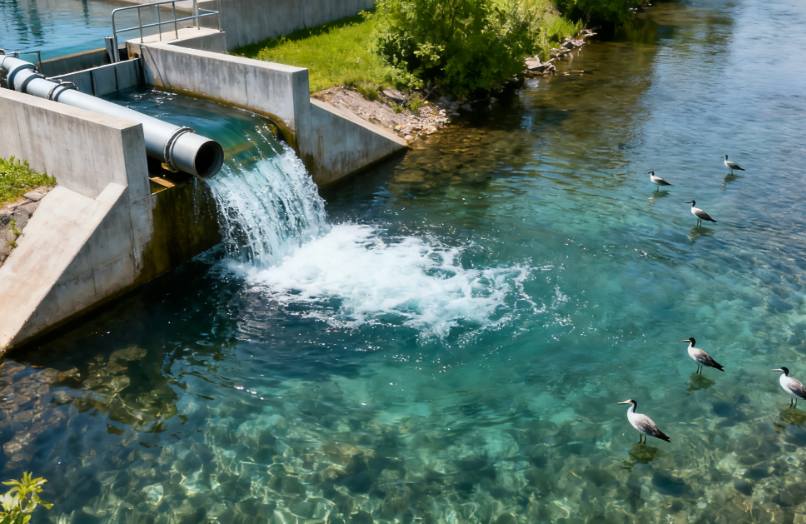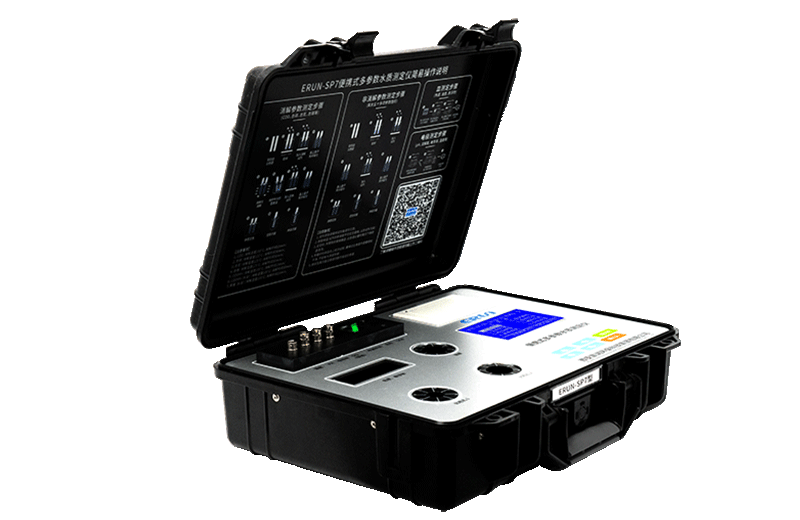Maintaining healthy water systems is essential for environmental sustainability, industrial efficiency, and public safety. One of the key indicators of water quality is dissolved oxygen (DO), a measure of the amount of oxygen gas dissolved in water. Adequate DO levels are critical for aquatic life, wastewater treatment processes, and regulatory compliance. Accurate DO measurement ensures that water quality standards are met and that ecosystems remain balanced.
For professionals and researchers, using a reliable instrument is crucial. The ERUN-SP7-A5 Portable Dissolved Oxygen Meter offers a portable, precise, and easy-to-use solution for rapid DO testing across multiple industries.
Dissolved oxygen (DO) refers to the amount of oxygen gas that is present in water. It is a fundamental parameter indicating water health because oxygen is essential for the survival of fish, microorganisms, and other aquatic organisms.
Several factors influence DO concentrations in water:
Temperature: Colder water can hold more oxygen than warmer water.
Salinity: Higher salt content reduces the solubility of oxygen.
Organic Matter & Pollution: Excess organic materials can consume oxygen during decomposition.
Photosynthesis: Aquatic plants and algae release oxygen during daylight, increasing DO.
Monitoring DO is vital for several reasons:
Environmental Health: Ensures aquatic ecosystems remain balanced.
Regulatory Compliance: Helps wastewater and industrial plants meet environmental standards.
Process Efficiency: Supports the proper functioning of biological treatment in water treatment systems.

There are several ways to measure DO, each with its own advantages and limitations:
This is a traditional laboratory method that involves adding chemical reagents to a water sample to produce a measurable reaction proportional to the DO concentration. It is highly accurate but time-consuming and requires careful handling of chemicals.
Polarographic and galvanic sensors provide real-time DO measurements by generating a current proportional to the oxygen concentration. These methods are faster than titration but require regular calibration.
Modern optical sensors use luminescence quenching technology to measure DO without consuming oxygen in the sample. They offer high precision, stability, and minimal maintenance, making them ideal for both lab and field applications.
The ERUN-SP7-A5 is a high-precision instrument developed and manufactured by Erun Environmental Protection. Designed for rapid on-site measurement, it is stable, easy to operate, and supports one-handed use.
Measures dissolved oxygen concentration (mg/L or ppm), oxygen saturation (%), and water temperature (°C).
Equipped with a dedicated dissolved oxygen electrode, ensuring precise detection across a wide range of water types.
Portable design allows for quick and convenient measurements in the field or laboratory.
The SP7-A5 is suitable for multiple sectors, including:
Environmental Monitoring: Rivers, lakes, and reservoirs.
Aquaculture: Ensuring optimal oxygen levels for healthy aquatic life.
Wastewater Treatment: Maintaining DO levels for effective biological processes.
Industrial Applications & Research: Monitoring water quality in labs, factories, and academic studies.
With ERUN-SP7-A5, professionals can quickly obtain reliable DO readings, improving water quality management and operational efficiency.

To ensure accurate and consistent results:
Proper Sample Handling: Avoid oxygen loss during collection by using clean, airtight containers.
Calibrate the Instrument: Regular calibration ensures precision, especially in field conditions.
Adjust for Environmental Factors: Temperature and salinity can affect DO readings; consider these corrections when analyzing results.
Use Reliable Equipment: Instruments like the ERUN-SP7-A5 provide stable and repeatable measurements, reducing human error.
By following these best practices, professionals can trust the accuracy of their dissolved oxygen data.
DO measurement is essential for tracking water quality in rivers, lakes, and reservoirs. Low oxygen levels may indicate pollution or eutrophication, requiring timely intervention.
Maintaining appropriate DO levels is critical for biological treatment processes. Sufficient oxygen ensures microorganisms can effectively break down organic matter, improving treatment efficiency and compliance.
Fish and other aquatic species rely on dissolved oxygen for survival. Continuous DO monitoring helps aquaculture operators maintain a healthy environment and prevent stress or mortality.
DO measurement is widely used in research, process control, and quality assurance for various industries, including food, beverage, and chemical production.
ERUN has a strong reputation for innovation in water quality monitoring. The ERUN-SP7-A5 Portable Dissolved Oxygen Meter stands out for:
Ease of Use: Designed for one-handed operation and rapid measurement.
Precision: Dedicated electrode and advanced sensor technology ensure accurate readings.
Versatility: Suitable for multiple applications, from field monitoring to laboratory research.
Reliability: Stable performance even in challenging environmental conditions.
With ERUN, users can rely on robust instruments and dedicated support for all water quality testing needs.
Dissolved oxygen is a critical parameter in maintaining water health, environmental compliance, and operational efficiency. Using a high-quality instrument like the ERUN-SP7-A5 Portable Dissolved Oxygen Meter allows professionals to quickly and accurately measure DO levels, ensuring sustainable water management across industries.
Whether for environmental monitoring, aquaculture, wastewater treatment, or laboratory research, the SP7-A5 provides the reliability, precision, and convenience needed to make informed decisions about water quality.
For advanced water quality solutions, explore erunwas.com.